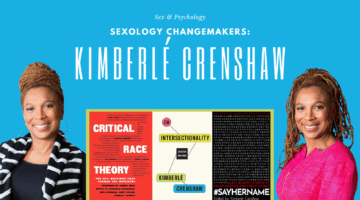When are Married Couples Most Likely to Cheat? The Link Between Infidelity and Relationship Length
September 3, 2018 by Justin Lehmiller
I shared an article on Twitter the other day about the prevalence of infidelity, which prompted a response from my pal Dan Savage about how cheating is associated with the length of a relationship. Basically, he wanted to know whether cheating is more or less common when you look at couples that have been together for a very long time. This is an interesting question and one that I’ve actually never been asked before, so I did some digging and here’s what I found. It turned out to be a pretty interesting story.
The first paper I came across was a recent study published in the Journal of Sex Research [1]. In total, 313 Israeli adults (aged 32-33 on average) were surveyed, all of whom were heterosexual and married for at least one year. Participants were asked about their likelihood of engaging in infidelity, and researchers looked at how this was associated with length of marriage.
Participants were divided into three groups: short (<5 years), intermediate (6-10 years), and long-term marriages (11+ years). The group that reported the greatest likelihood of cheating was the long-term group; the short-term group reported the lowest odds, with the intermediate group falling in between. In other words, the longer a couple had been together, the more likely it was for partners to say they were thinking about cheating.
However, the pattern was a little different for men and women. Specifically, for men, the odds of cheating went up the longer the relationship went on (i.e., what scientists refer to as a linear effect). For women, though, the effect was curvilinear, such that women reported the greatest likelihood of cheating in intermediate marriages, but lower odds of cheating in short- and long-term marriages. In other words, both men and women appeared to get the so-called “seven-year itch”; however, while it seemed to pass for women, it didn’t for men.
Of course, this study was based on self-reported likelihood of cheating—not actual cheating. So I did some more digging and found that research looking at actual cheating behaviors backs these findings up.
Drawing on data from a nationally representative sex survey conducted in the United States in the 1990s (the National Health and Social Life Survey), a study published in the Journal of Marriage and Family looked at when cheating was most likely to occur in a marriage (note: at the time these data were collected, only heterosexual marriages were legally recognized, so that’s what the researchers were focused on) [2]. The results indicated that, for women, their odds of cheating were highest in the 7th year of marriage, and decreased steadily after that (in fact, cheating was practically non-existent among women who had been married 20-30 years).
By contrast, men also had a high rate of cheating around the 7th year, which actually decreased until about the 18th year, at which point it started increasing again. In fact, men who had been married 30+ years actually had the highest odds of cheating—even higher than men who had the “seven-year itch.” This suggests that the pattern for men isn’t perfectly linear after all, with a peak in that intermediate term followed by a dip, which is followed by another increase much later on.
So, in short, infidelity does seem to increase with relationship length to a degree, but the story appears to be different for men and women (again, at least heterosexual men and women).
A few quick caveats to these findings: in addition to only focusing on male-female couples, the data weren’t longitudinal, so some caution is warranted when interpreting them. For example, we might be observing age or generation effects here (e.g., perhaps older women are less likely to admit infidelity than younger women, which might explain why older women’s reports of cheating were so rare). To draw more concrete conclusions about how the odds of infidelity change over time, a longitudinal design would give us a lot more confidence.
Also, much of the research on infidelity, including the study from the Journal of Marriage and Family, doesn’t distinguish between consensual and non-consensual non-monogamy. It seems reasonable to predict that rates of both forms of non-monogamy would increase with relationship length, but it would be useful to categorize these behaviors separately in future research because it’s possible that the trends might be different to some degree.
Want to learn more about Sex and Psychology ? Click here for previous articles or follow the blog on Facebook (facebook.com/psychologyofsex), Twitter (@JustinLehmiller), or Reddit (reddit.com/r/psychologyofsex) to receive updates.
[1] Ziv, I., Lubin, O. B. H., & Asher, S. (2018). “I Swear I Will Never Betray You”: Factors Reported by Spouses as Helping Them Resist Extramarital Sex in Relation to Gender, Marriage Length, and Religiosity. The Journal of Sex Research, 55(2), 236-251.
[2] Liu, C. (2000). A theory of marital sexual life. Journal of Marriage and Family, 62(2), 363-374.
Image Source: 123RF
You Might Also Like:

Dr. Justin Lehmiller
Founder & Owner of Sex and PsychologyDr. Justin Lehmiller is a social psychologist and Research Fellow at The Kinsey Institute. He runs the Sex and Psychology blog and podcast and is author of the popular book Tell Me What You Want. Dr. Lehmiller is an award-winning educator, and a prolific researcher who has published more than 50 academic works.
Read full bio >


